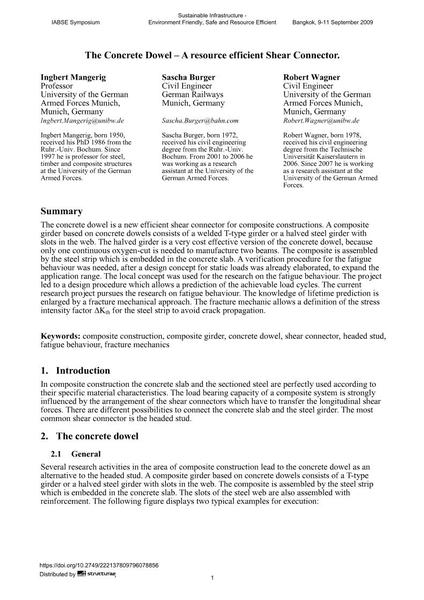The Concrete Dowel – A resource efficient Shear Connector.

|
|
|||||||||||
Détails bibliographiques
| Auteur(s): |
Ingbert Mangerig
Sascha Burger Robert Wagner |
||||
|---|---|---|---|---|---|
| Médium: | papier de conférence | ||||
| Langue(s): | anglais | ||||
| Conférence: | IABSE Symposium: Sustainable Infrastructure - Environment Friendly, Safe and Resource Efficient, Bangkok, Thailand, 9-11 September 2009 | ||||
| Publié dans: | IABSE Symposium Bangkok 2009 | ||||
|
|||||
| Page(s): | 86-95 | ||||
| Nombre total de pages (du PDF): | 8 | ||||
| Année: | 2009 | ||||
| DOI: | 10.2749/222137809796078856 | ||||
| Abstrait: |
The concrete dowel is a new efficient shear connector for composite constructions. A composite girder based on concrete dowels consists of a welded T-type girder or a halved steel girder with slots in the web. The halved girder is a very cost effective version of the concrete dowel, because only one continuous oxygen-cut is needed to manufacture two beams. The composite is assembled by the steel strip which is embedded in the concrete slab. A verification procedure for the fatigue behaviour was needed, after a design concept for static loads was already elaborated, to expand the application range. The local concept was used for the research on the fatigue behaviour. The project led to a design procedure which allows a prediction of the achievable load cycles. The current research project pursues the research on fatigue behaviour. The knowledge of lifetime prediction is enlarged by a fracture mechanical approach. The fracture mechanic allows a definition of the stress intensity factor ∆Kth for the steel strip to avoid crack propagation. |
||||
